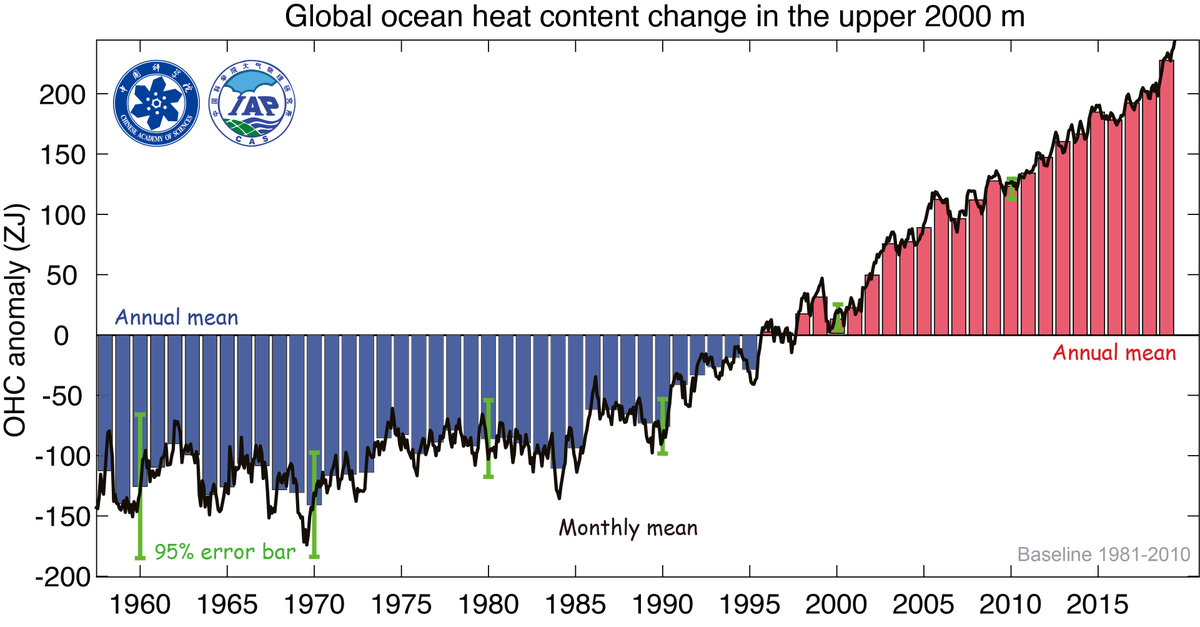
[1/8] 2020 ocean temperature (heat content) are formally released today by both IAP/CAS and NOAA/NCEI, both data show upper 0-20000m ocean heat content hit record high in 2020. With @MichaelEMann @jfasullo etc. link.springer.com/article/10.100… 
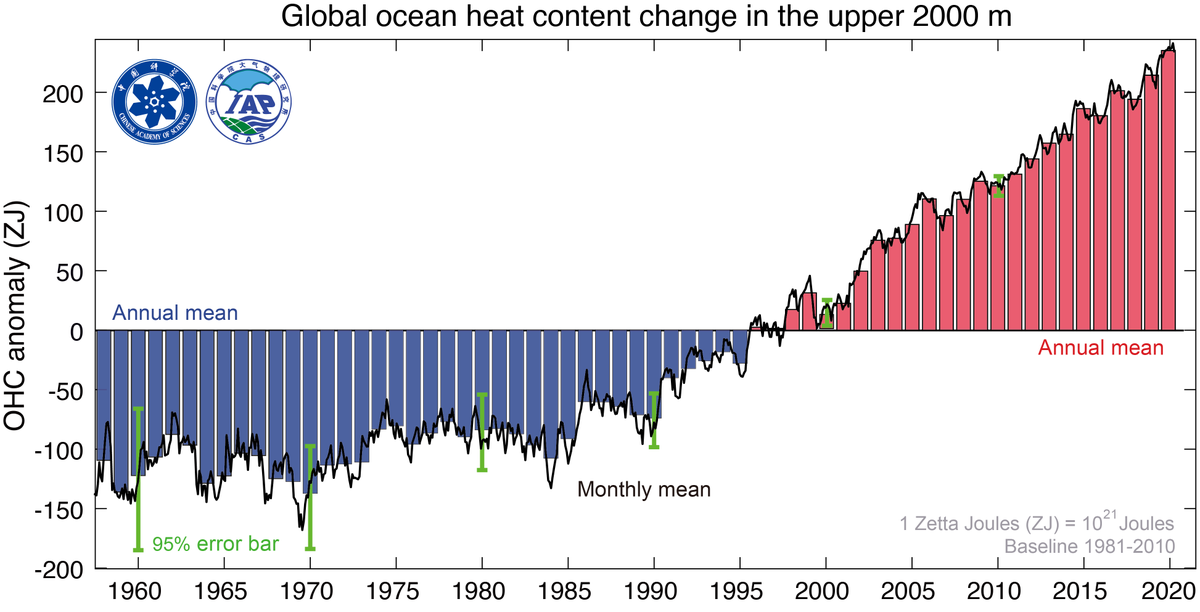
[2/8] Differences between the 2020 OHC analyses between IAP/CAS and NOAA/NCEI reflect the uncertainties in the calculation due to method and data coverage. Further quantification of the uncertainties in OHC will help to better specify the confidence in OHC assessment. 

[3/8] Over 90% of the excess heat due to global warming is absorbed by the oceans, and the heat has already penetrated into deep layers. Ocean warming is a direct indicator of global warming and the best measure of the Earth’s Energy Imbalance. 
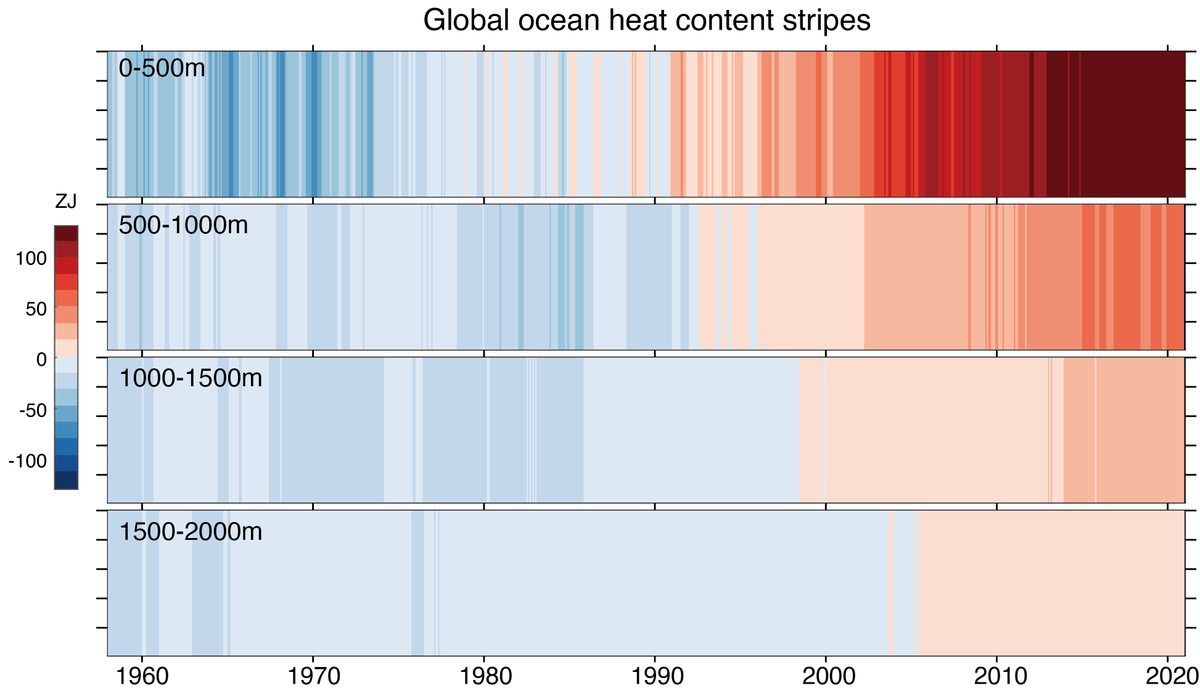
[4/8] The geo-pattern of 2020 OHC relative to 1981-2010 shows warming throughout most of the world’s oceans with higher rates of warming in both the northern and southern Atlantic (except southeast of Greenland), and in localized zones of the Pacific, Indian and Southern Oceans 
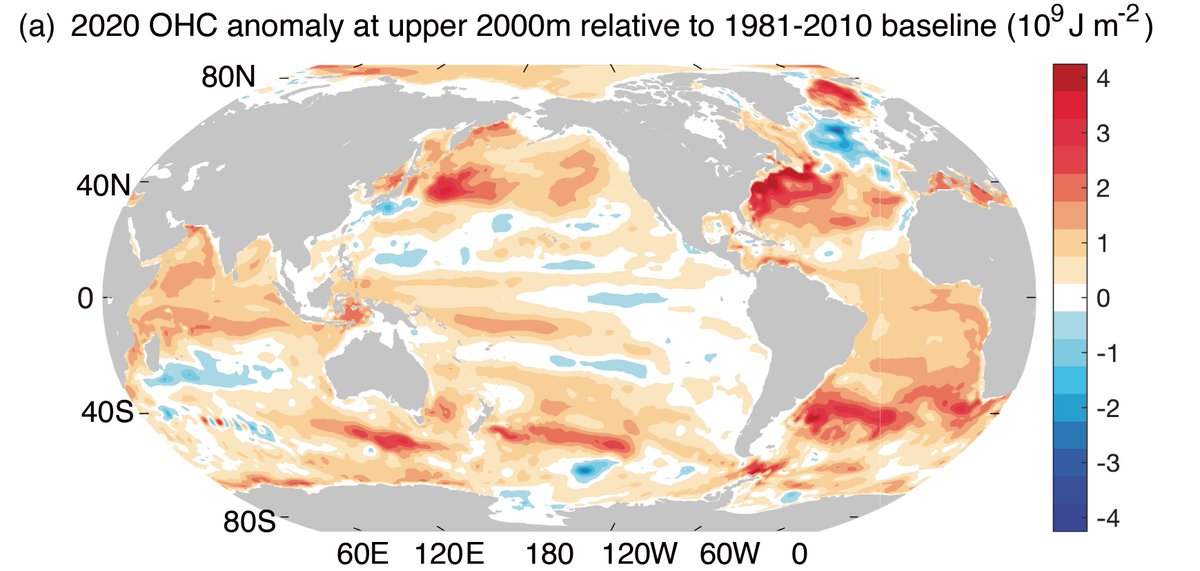
[5/8] W.r.t. 2019, the spatial pattern of 2020 OHC anomalies is much less distinct because internal variability can overwhelm long-term trends. Clearly ENSO causes the heat redistribution in the Pacific and Indian oceans. North Pacific warming 2020 supports marine heat waves. 
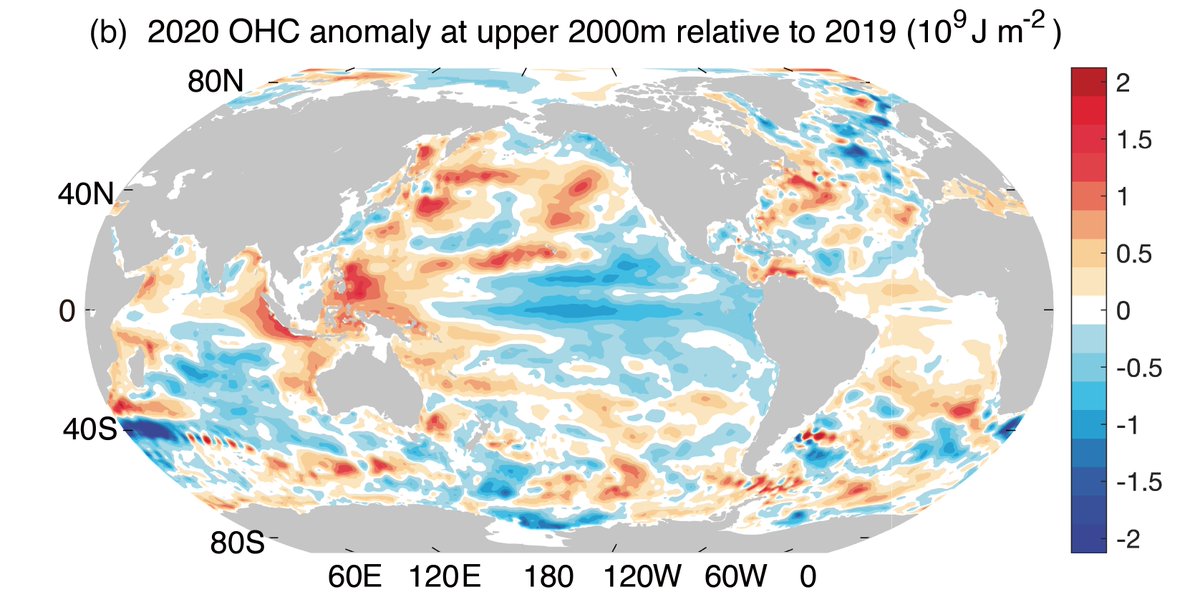
[6/8] Ocean heat budget update: a total full-depth ocean warming of 380 ± 81 ZJ (0.39 ± 0.08 W m^−2 over the global surface) from 1960-2020, with ~40.3%, 21.6%, 29.2% and 8.9% stored in the 0–300m, 300–700m, 700–2000m and below-2000m layers, respectively. 
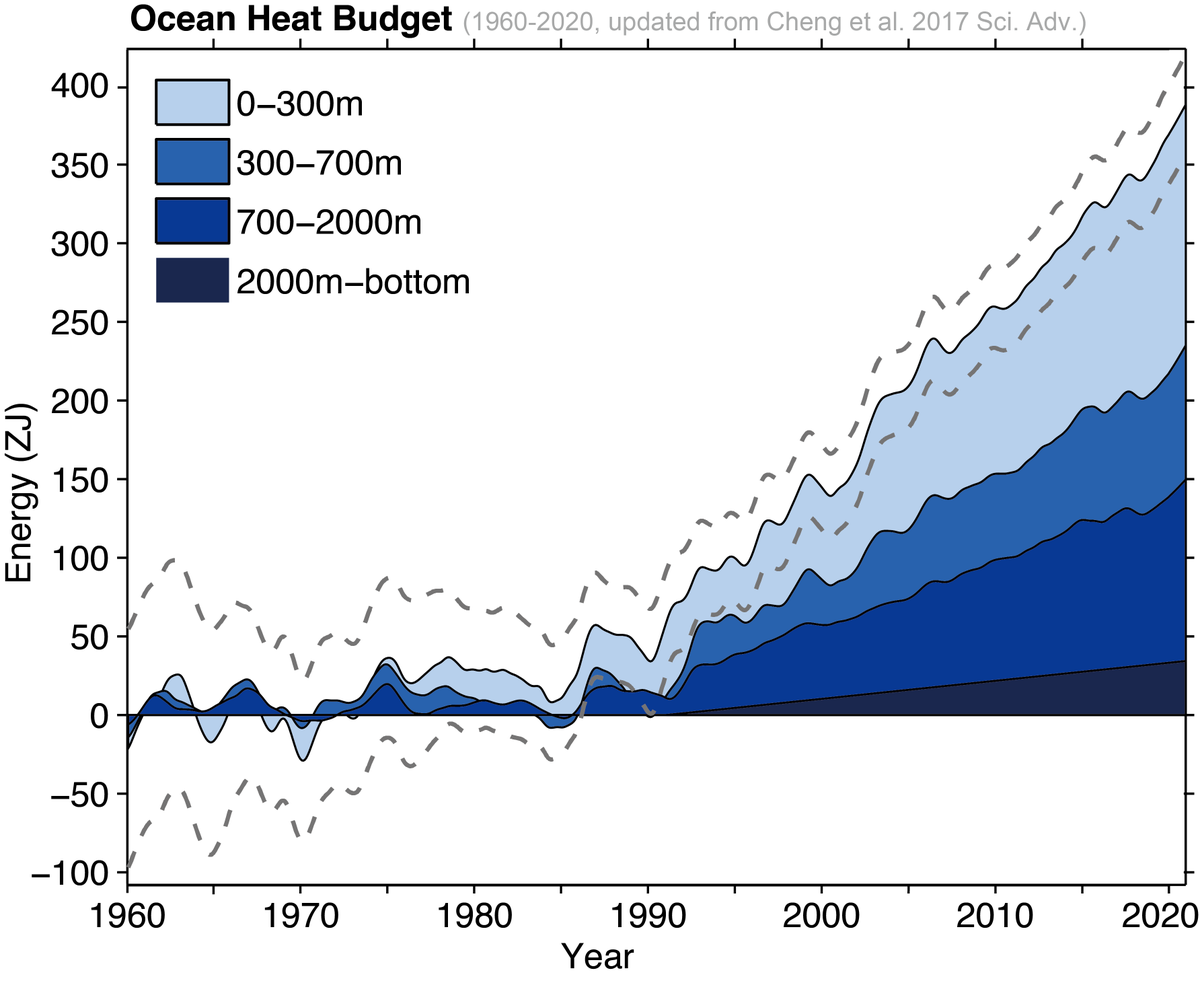
[7/8] Regional assessment is crucial to risk assessment and societal adaptation. In the tropical North Atlantic Ocean, where hurricanes generate and develop, OHC increases have been persistent since ~1958. The Mediterranean Sea, surrounded by 22 countries, is a hotspot of CC. 
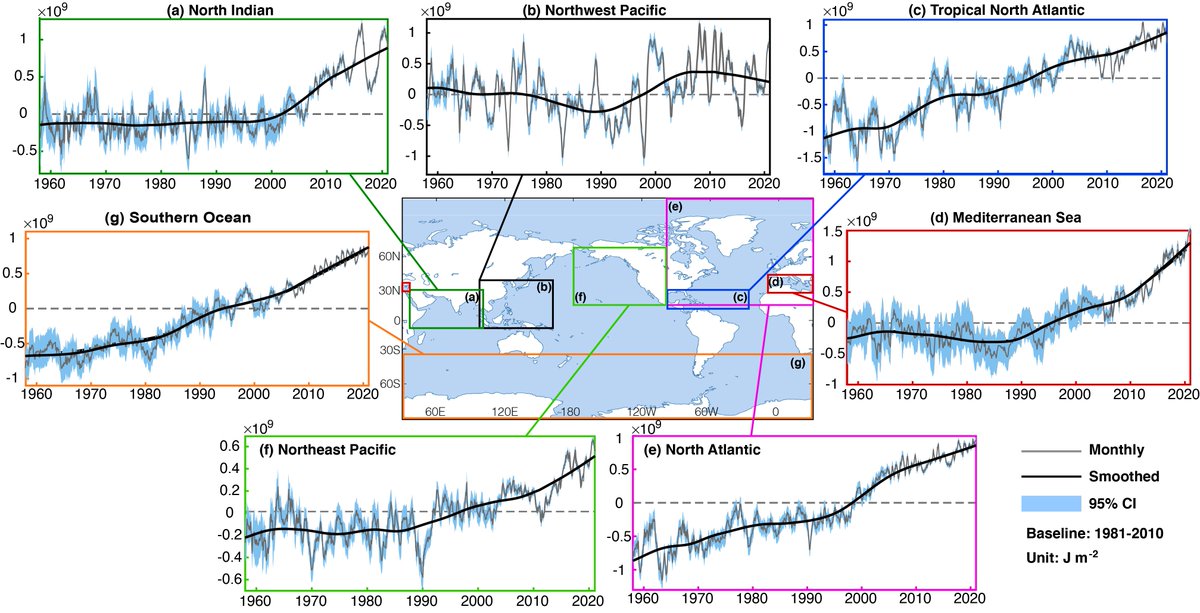
[8/8] The salinity-contrast increase trend (“fresh gets fresher, and salty gets saltier”) continues, indicating an acceleration of global water cycle. The ocean vertical stratification continues to increase, mainly caused by stronger ocean warming at upper layers than deep water. 
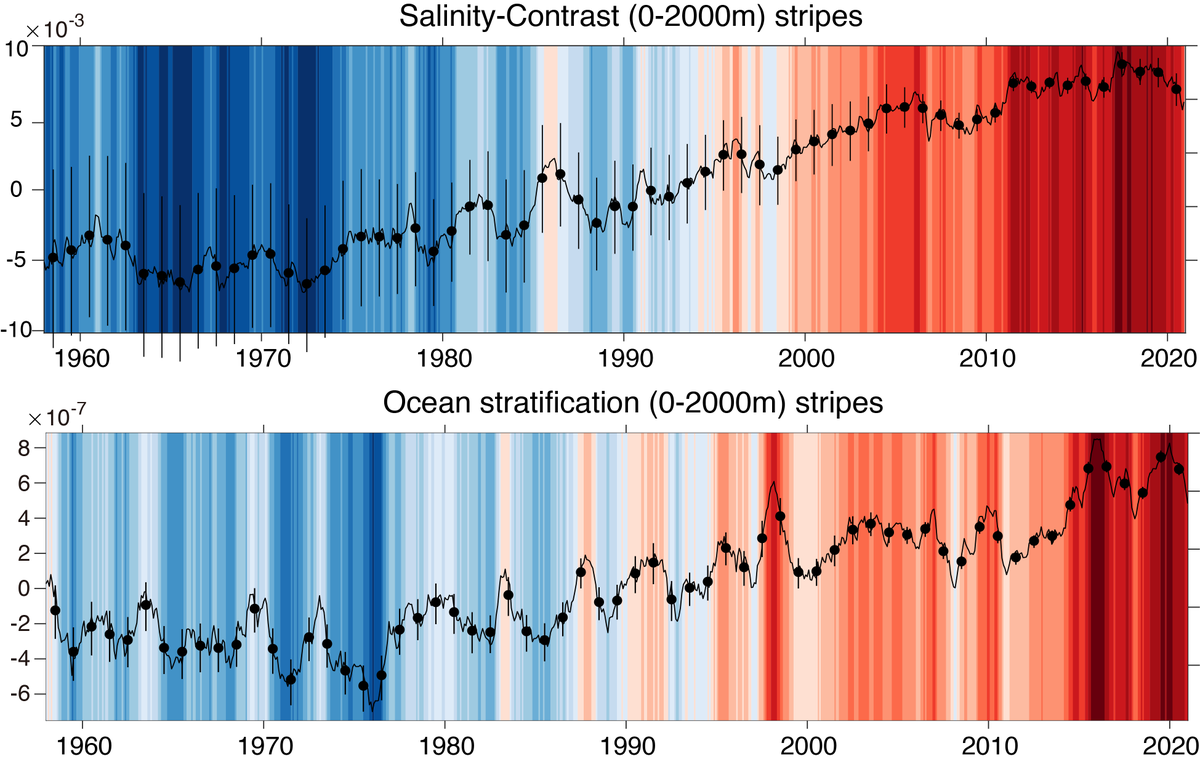
• • •
Missing some Tweet in this thread? You can try to
force a refresh






